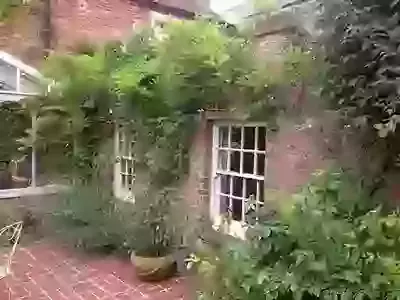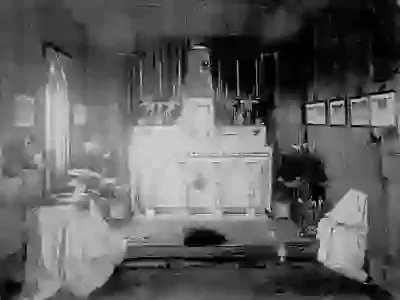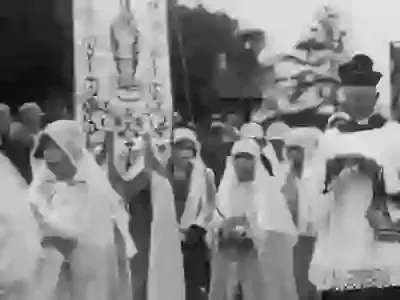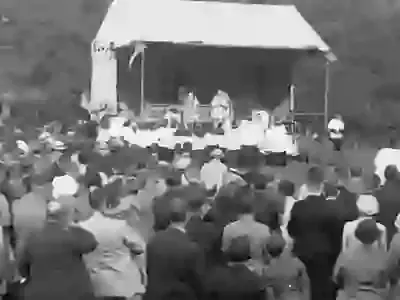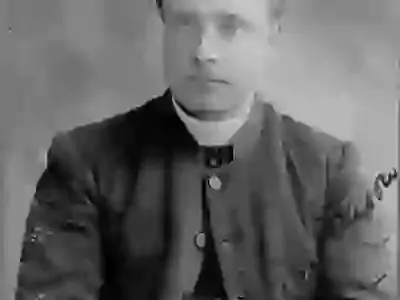History
The Sacred Heart of Jesus Church was blessed and opened on the Feast of Corpus Christi, on 22 June 1916. This was the first Church Southwold had seen in nearly 300 years: though many local pre-Reformation churches were witness to Suffolk’s once thriving Catholic presence, the faithful became few and far between following Henry VIII’s split with Rome.
In 1559, Queen Elizabeth I outlawed Catholic Mass rendering Catholics recusants (‘refusers’ who would not attend Protestant worship) served by priests ordained under Queen Mary. Catholicism was still practised and in 1625 the Pope appointed a Bishop for England. The Jesuit College of the Holy Apostles took charge of the Mission in Essex and East Anglia. Important recusant families include the Bedingfields at Oxburgh, the Jernighams at Costessey, the Gages at Hengrave, and the Huddlestones at Sawston.
-
The Oratory of St Peter
During the English Civil War (1642-1649), a heavily Puritan East Anglia exiled many Catholics. Two prominent martyrs from this turbulent time are St Henry Morse, the ‘priest of the plague’ (d. 1645), and St Alban Roe (d. 1642). By the 18th Century, East Anglian Catholics were in danger of dying out despite a small influx of Irish immigration. However, British attitudes began to change with the French Revolution: the public was sympathetic to the priests, monks, and nuns persecuted by the revolutionaries.
In 1829, Catholics were finally granted civil rights and in 1840, East Anglia became part of the Eastern District, with a Bishop in Northampton. With the restoration of the hierarchy in 1850, this became the Diocese of Northampton. Sometime in the late 1870s, Fr Arthur Job Wallace, then Parish Priest of St Mary’s Ipswich, celebrated the first post-Reformation Mass in Southwold.
The Oratory of St Peter
During the English Civil War (1642-1649), a heavily Puritan East Anglia exiled many Catholics. Two prominent martyrs from this turbulent time are St Henry Morse, the ‘priest of the plague’ (d. 1645), and St Alban Roe (d. 1642). By the 18th Century, East Anglian Catholics were in danger of dying out despite a small influx of Irish immigration. However, British attitudes began to change with the French Revolution: the public was sympathetic to the priests, monks, and nuns persecuted by the revolutionaries.
In 1829, Catholics were finally granted civil rights and in 1840, East Anglia became part of the Eastern District, with a Bishop in Northampton. With the restoration of the hierarchy in 1850, this became the Diocese of Northampton. Sometime in the late 1870s, Fr Arthur Job Wallace, then Parish Priest of St Mary’s Ipswich, celebrated the first post-Reformation Mass in Southwold.
-
Growth of the Catholic Community
The Catholic community in Southwold continued to grow and, in 1897, licensed victualler James Crimmen extended his home – the Manor House on the High Street - to provide a Chapel. Mr Crimmen named the Chapel St Peter’s Oratory and provided all the furniture, fittings, vestments, and sacred vessels. Fr Alexander Scott, from Lowestoft, celebrated the first Mass in the Oratory in June 1897. Mr Crimmen was anxious to establish a regular Mass, to which end he and his brother William promised £25 a year in support of a Priest. Bishop Arthur Riddell (Northampton) agreed, and Fr Henry St Leger Mason, then Curate at Lowestoft, was sent to serve Southwold on Sundays and Holidays. Two years later the Bishop appointed him First Priest in Charge of the Southwold Mission.
Growth of the Catholic Community
The Catholic community in Southwold continued to grow and, in 1897, licensed victualler James Crimmen extended his home – the Manor House on the High Street - to provide a Chapel. Mr Crimmen named the Chapel St Peter’s Oratory and provided all the furniture, fittings, vestments, and sacred vessels. Fr Alexander Scott, from Lowestoft, celebrated the first Mass in the Oratory in June 1897. Mr Crimmen was anxious to establish a regular Mass, to which end he and his brother William promised £25 a year in support of a Priest. Bishop Arthur Riddell (Northampton) agreed, and Fr Henry St Leger Mason, then Curate at Lowestoft, was sent to serve Southwold on Sundays and Holidays. Two years later the Bishop appointed him First Priest in Charge of the Southwold Mission.
-
New Building
By 1901, the Oratory of St Peter had become too small to accommodate all the Catholics in town and it became increasingly obvious that the many parishioners needed a larger Church. They raised £100 and an anonymous donor gave £400, providing sufficient funds to purchase land and, in 1901, the current site fronting onto the common was selected. Fr Mason began the appeal for funds to build but the response was poor (there were 60 souls in the Parish plus summer visitors, though the summer season was short and there was very little local industry).
"I don’t think this Mission will ever be anything more than a visiting Summer Holiday place.” – Father Mason
A generous benefactress emerged: Miss Amy Auld (Hunt’s Farm, Blythburgh) was a Catholic convert who pledged £100 per year to the Mission in the hope that the donations would amount to a total of £2000 by the time of her death. However, she passed away on 11th August 1912 having enjoyed a short yet happy life as a Religious at East Bergholt. Though her annual donations didn't reach her target, she left a bequest of £3000 for the erection of a Church and £1000 for the endowment of the Mission, totalling an amount equivalent to £1.4 million today. Fr Benedict Williamson, a prolific architect, priest, and writer, commissioned the design of the Church in 1912. Work commenced during the War but was inevitably delayed by the calling-up of men and the commandeering of supplies by the Government. The Church was eventually completed on November 10th 1915 with Fr Mason placing the last stone in the tower. On 22nd June 1916, the feast of Corpus Christi, the first Mass was said in the new Sacred Heart of Jesus Church, Southwold.
New Building
By 1901, the Oratory of St Peter had become too small to accommodate all the Catholics in town and it became increasingly obvious that the many parishioners needed a larger Church. They raised £100 and an anonymous donor gave £400, providing sufficient funds to purchase land and, in 1901, the current site fronting onto the common was selected. Fr Mason began the appeal for funds to build but the response was poor (there were 60 souls in the Parish plus summer visitors, though the summer season was short and there was very little local industry).
"I don’t think this Mission will ever be anything more than a visiting Summer Holiday place.” – Father Mason
A generous benefactress emerged: Miss Amy Auld (Hunt’s Farm, Blythburgh) was a Catholic convert who pledged £100 per year to the Mission in the hope that the donations would amount to a total of £2000 by the time of her death. However, she passed away on 11th August 1912 having enjoyed a short yet happy life as a Religious at East Bergholt. Though her annual donations didn't reach her target, she left a bequest of £3000 for the erection of a Church and £1000 for the endowment of the Mission, totalling an amount equivalent to £1.4 million today. Fr Benedict Williamson, a prolific architect, priest, and writer, commissioned the design of the Church in 1912. Work commenced during the War but was inevitably delayed by the calling-up of men and the commandeering of supplies by the Government. The Church was eventually completed on November 10th 1915 with Fr Mason placing the last stone in the tower. On 22nd June 1916, the feast of Corpus Christi, the first Mass was said in the new Sacred Heart of Jesus Church, Southwold.
-
Dunwich Pilgrimage
In the years following WWI, there was considerable poverty in the Suffolk coastal parishes, described as extreme by Fr Davidson, the priest from Aldeburgh. Fr Davidson received encouragement from Fr Mason with the building of the Catholic Church in Aldeburgh. Together they instituted the Dunwich Pilgrimage: on 8th March 1929, the Feast of St Felix, the two Priests gave a Mass in Dunwich to a congregation of five. From that small beginning, the Dunwich Pilgrimage grew to a most successful annual event. A report in the Tablet records that the sixth annual pilgrimage to Dunwich (August 1936) attracted its largest attendance of around two thousand people. With such large crowds, the Sunday in August when the pilgrimage took place became locally known as Catholic Sunday.
It was widely held that the Dunwich Pilgrimage brought Catholics together and reminded them of their great continuity with the Catholic history of East Anglia. The Pilgrimage ceased during WWII but was revived for a few years after the war and held in the ruins of the Old Franciscan Monastery.
Dunwich Pilgrimage
In the years following WWI, there was considerable poverty in the Suffolk coastal parishes, described as extreme by Fr Davidson, the priest from Aldeburgh. Fr Davidson received encouragement from Fr Mason with the building of the Catholic Church in Aldeburgh. Together they instituted the Dunwich Pilgrimage: on 8th March 1929, the Feast of St Felix, the two Priests gave a Mass in Dunwich to a congregation of five. From that small beginning, the Dunwich Pilgrimage grew to a most successful annual event. A report in the Tablet records that the sixth annual pilgrimage to Dunwich (August 1936) attracted its largest attendance of around two thousand people. With such large crowds, the Sunday in August when the pilgrimage took place became locally known as Catholic Sunday.
It was widely held that the Dunwich Pilgrimage brought Catholics together and reminded them of their great continuity with the Catholic history of East Anglia. The Pilgrimage ceased during WWII but was revived for a few years after the war and held in the ruins of the Old Franciscan Monastery.
-
Fr Mason
Fr Mason served the Southwold Mission for over 40 years and his legacy remains visible in the Church he fought so hard to provide for Catholics in Southwold. In 1938 Fr Mason was made Canon of the diocese of Northampton and his elevation to this dignity was no doubt a recognition of the great part he had played in the establishing of the Parish. He died on 11th November 1940 and was buried in the Catholic part of St Edmund’s cemetery, Southwold. He had spent nearly the entirety of his priestly life in the town and it is fitting that he should rest there. Of Fr Mason, Fr Davidson wrote:
"Canon Mason made a study of the local churches and gave several talks to the local Antiquarian Society. He loved his dogs, he loved the country round and would go for long walks. He would say that his dogs were the most faithful, loyal and affectionate of all his parishioners. It was perhaps Dunwich he was especially fond of (sic). The history of St Felix and St Edmund fascinated him."
During the War Years, and following Fr Mason’s death, Frs R. Howarth and K. Ellison, assisted by Army Chaplains, kept the Mission alive. Immediately following the War, the tenure of a priest was short: for example, Fr Henry Macklin served just one year from 1945-46 and Fr John Mossey from 1947-51. Fr (later Canon) McBride arrived in 1951 and held tenure in Southwold for 7 years. During his time, the Church of St Edmund King & Martyr was built in Halesworth. The Halesworth church was, as it remains today, an integral part of the Parish.
Fr Mason
Fr Mason served the Southwold Mission for over 40 years and his legacy remains visible in the Church he fought so hard to provide for Catholics in Southwold. In 1938 Fr Mason was made Canon of the diocese of Northampton and his elevation to this dignity was no doubt a recognition of the great part he had played in the establishing of the Parish. He died on 11th November 1940 and was buried in the Catholic part of St Edmund’s cemetery, Southwold. He had spent nearly the entirety of his priestly life in the town and it is fitting that he should rest there. Of Fr Mason, Fr Davidson wrote:
"Canon Mason made a study of the local churches and gave several talks to the local Antiquarian Society. He loved his dogs, he loved the country round and would go for long walks. He would say that his dogs were the most faithful, loyal and affectionate of all his parishioners. It was perhaps Dunwich he was especially fond of (sic). The history of St Felix and St Edmund fascinated him."
During the War Years, and following Fr Mason’s death, Frs R. Howarth and K. Ellison, assisted by Army Chaplains, kept the Mission alive. Immediately following the War, the tenure of a priest was short: for example, Fr Henry Macklin served just one year from 1945-46 and Fr John Mossey from 1947-51. Fr (later Canon) McBride arrived in 1951 and held tenure in Southwold for 7 years. During his time, the Church of St Edmund King & Martyr was built in Halesworth. The Halesworth church was, as it remains today, an integral part of the Parish.
